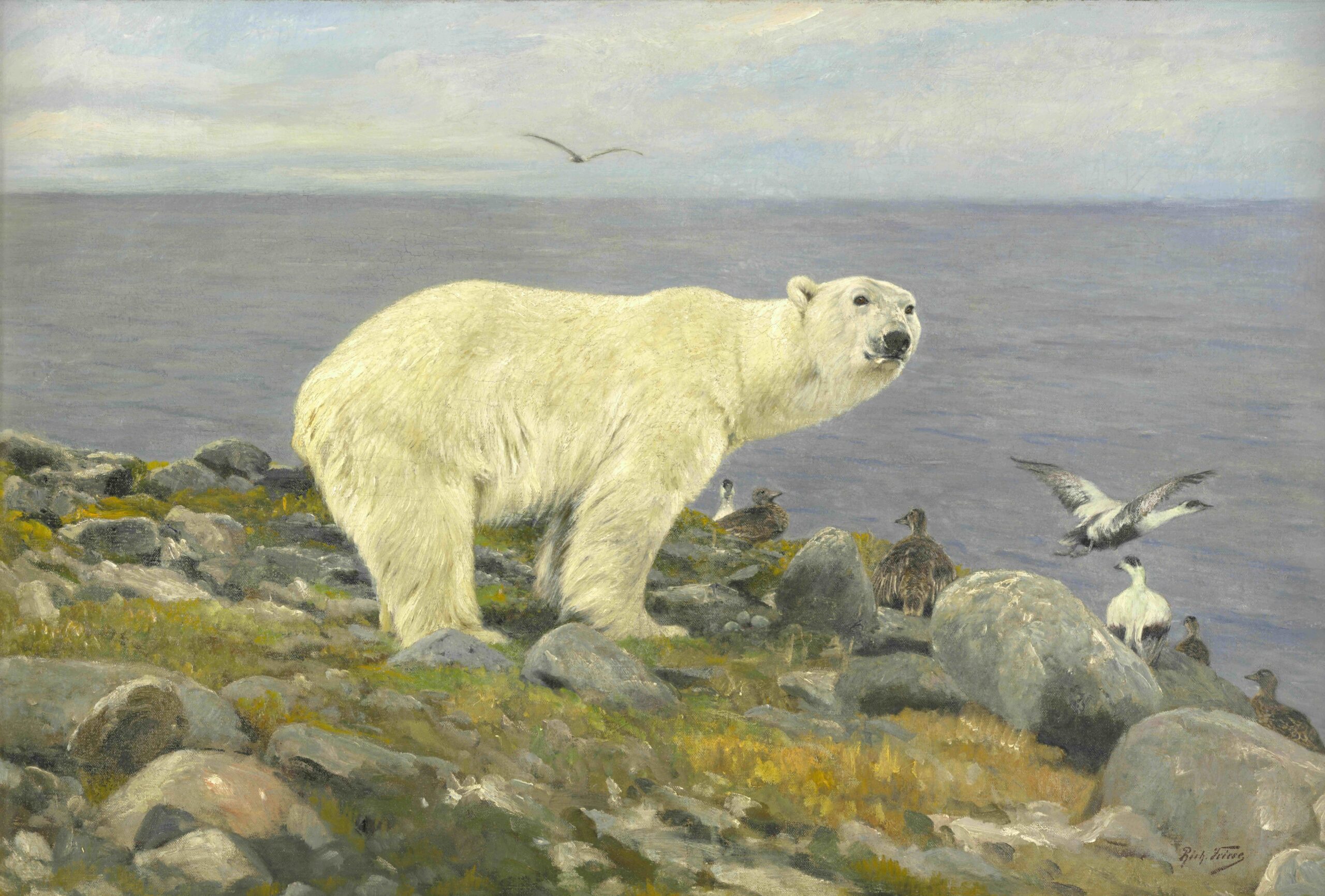
Welcome to One Fine Show, where Observer highlights a recently opened exhibition at a museum not in New York City, a place we know and love that already receives plenty of attention.
The longer I live in New York, the more I have come to appreciate pigeons. There are many symbols of the city that new arrivals insist on fetishizing, but our rock doves will never be gentrified in the same way TikTok pizza parlors or sourdough bagels have managed to render their delights more digestible for younger generations. This indifference to visitors seems to seep into the depiction of the birds, too, whether it’s Iván Argote’s sculpture on the High Line, or Maurizio Cattelan’s most popular intervention, which is, of course, titled Turisti (1997).
Depictions of slightly more exotic fauna are the subject of “Survival of the Fittest,” a recently opened show at the Nelson-Atkins Museum of Art that is the first in its 90-year history to explore the subject matter. Organized by the National Museum of Wildlife Art, the exhibition features work from the turn of the century by painters Carl Rungius (American, German-born, 1869-1959), Richard Friese (German, 1854-1918), Wilhelm Kuhnert (German, 1865-1926), and Bruno Liljefors (Swede, 1860-1939), and pairs nicely with the recently closed show at the Met featuring the work of Caspar David Friedrich (German, 1774-1840), whose revolutionary and romantic depictions of nature inspired many successors.
SEE ALSO: Alicja Kwade Probes the Edges of Reality in Her Pace Debut
The men featured in this show, however, are less interested in religion and allegory than Friedrich. They don’t even seem too concerned with anthropomorphization, striving instead to capture these creatures as they were. Take Friese’s Polar Bear and Eiders on the Coast, which has no date but emerges from an expedition the painter took in 1898 through the Norwegian fjords and into the Arctic Ocean. The sight of the quizzical bear on snowless ground is just too strange to be a metaphor for anything. He’s hanging out with some friendly looking birds, but that just raises further questions. The flow of his fur is photorealistic, while the grass and rocks break down to impressionistic blurs because the point of this work is to capture the animals. It’s impossible to imagine how alien this scene would have appeared to a viewer in the early 20th Century.
For the Friedrich heads, the messy viewers who love drama, there is much to enjoy about Rungius’ Morning Mist (Harlow Triptych) (c.1930). The scene recalls a moose hunt at dawn, most likely near Canada, with the giant beast emerging from the low clouds that peel off the ground, like a curtain rising from the stage. With his small eyes, the moose looks a little dumb, but these are the only small things about him. Back in college, folks would hit moose with their cars, and the greater portion of the damage would go to the car. Rungius achieves this same effect by having the monster dwarf the foggy trees surrounding him.
Liljefors’s Swans (1917) is so innocent, meanwhile, that it’s hard to believe it was made during the First World War. It’s the opposite of the polar bear, because while the background becomes impressionistically smeary, the swans themselves are composed of foreshortened strokes that resemble pointillism or even pixels. But the message of this painting lies in their blurred reflections in the
“Survival of the Fittest: Picturing Wildlife and Wilderness” is on view at the Nelson-Atkins Museum of Art through August 24, 2025.
<
